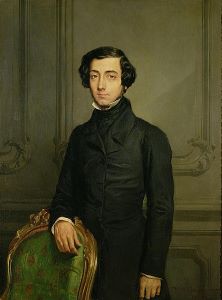The Geometry of Power
Life in the 21st Century is a reader-supported publication. Please become a paid subscriber.
Geometry – concerned with the shape of individual objects, spatial relationships among various objects, and the properties of surrounding space.
Power is like gravity, a curvature of space-time. The more concentrated, the more power warps and influences everything around it. Power is helpfully understood from a geometric perspective. The geometric form centralized power has largely been depicted is that of a pyramid. Paradoxically, the top of the pyramid has the least mass, though it exerts the most influence. To understand centralized political power, an understanding of the shape and properties of networks is also necessary. Centralized power is always simplistically networked. Wide channels of communication flow forcefully in one direction, very narrow feedback channels fitfully return information. With unsymmetrical structure, hierarchical systems of power are by necessity rigid, not only zealously conservative of the established forms they rely upon, but incapable of change, even when it's in power’s own greatest self-interest.
Across history, most political thinking is devoid of the simple understanding of the geometry of power, the absence is no mystery. The vast majority of recorded history saw power overwhelmingly centralized, exceptions few. Established power always loathes close examination of structure. The Greeks and Romans both understood the geometry of centralized power. The Greeks called it tyranny, antithetical to self-government, whether defined using the Greek term – democracy, or Rome’s Latin – republican. Both understood with self-government, power needed to be both distributed and wherever collected, held for only a brief period of time – the geometric space-time of democracy.
The great democratic thinker Alexis de Tocqueville understood better than most the geometry of power. In the Ancien Regime et la Revolution, he explained centralized power was both the cause and then the failure of the 1789 revolution. At the end of the 18th century, he records how all power in France was concentrated under the monarchy,
“The central power in eighteenth-century France... had already succeeded in destroying all the intermediate authorities and, since nothing but a huge and empty space had emerged, from a distance central government appeared to each citizen to be the only means of maintaining the social machine, the single necessary agent of public life.”
He continues explaining power’s gravitational pull,
“As Paris became more and more the model of the arbiter of taste, the only center of power and the arts, the chief home of national activity, so the industrial life of the nation retreated and concentrated its forces there even more.”

In comparison to his contemporaries and really most European political thought since and all contemporary American political thought today, if anything can be so labeled, the great advantage Tocqueville possessed was his experience with and understanding of the 1830s American republic. In contrast to France and the role of Paris he writes, “No American citizen imagines that the people of New York could decide the fate of the Union. Furthermore, no one in the state of New York itself imagines that the individual will of the city could by itself manage affairs.”
Tocqueville points to this ignorance of the geometry of power and the resulting impotence to effect change, a political affliction shared by France's revolutionaries and manifesting all political thought today,
“The aims recommended by the reformers were many and varied but their methods were the same. They wanted to borrow the strength of central government and use it to smash everything and rebuild according to a new plan of their own conception. Such a task could, they thought, be accomplished only by the central power.”
A half-century later, Tocqueville concludes the revolution’s contradiction in result,
“Let us cease to be surprised at the marvelous ease with which centralization was re-established in France at the beginning of the century. The men of '89 had overturned the building but its foundations had stayed in the very hearts of its destroyers and, upon these foundations, they were able to rebuild it, constructing it more stoutly than it had ever been before.”
The historical influence of the two great revolutions of the 18th century remains fascinating. The French Revolution became a fetish, a supposed fount of wisdom for many, including Marx’s followers, who with their ascension to power advocated such ludicrous notions as dictatorships of the proletariat. A complete ignorance of the geometry of power resulted in innumerable wrong-headed ideas that were DOA. Centralized power's very shape excluded notions of égalité, fraternité, and liberté. The always distasteful bourgeois fetishizing of the revolution's violence missed Tocqueville's essential point, “Paris had become the master of France and already an army was gathering which was to turn into the master of Paris.”
The historical landscape of George III's American colonies was much different than Louis XVI's France. The simple distance between London and her subjects created the space for the much greater freedom of the American colonists turned rebels. The victorious revolutionaries rose out of an infinitely more distributed system of power than most of the revolutionaries in France could ever imagine. Yet, over time, power gradually centralized, attracted ever more to the gravitational pull of a Washington in alliance with economic power ever more concentrated in a handful of increasingly powerful corporations. Since the defeat of the Populists at the end of the 19th century and with the continual loss of democratic forms, American reformers, like their French predecessors, increasingly looked to centralized control as the means to effect change.
Today, the understanding of the geometry of power, once widespread in America, is largely lost to history. As America enters an election year, political power is so centralized, political focus oppressively concentrates on the presidency. Most amusing, if one has the stomach, the current ancien holder of the office proclaims he will save democracy, a power in the very best of circumstances the office has no ability to confer, even if its current occupant had any understanding of it. Such politics is devoid of any notion of the geometry of power. Reliance on centralized power produces only greater centralized power, until, as Tocqueville quotes the Marquis de Mirabeau, “The head becomes too big, then the body becomes apoplectic and dies.”

